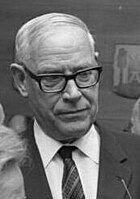1966 Hessian state election
| |||||||||||||||||||||||||||||||||||||||||||||||||||||||||||||||||||||||||||
All 96 seats in the Landtag of Hesse 49 seats needed for a majority | |||||||||||||||||||||||||||||||||||||||||||||||||||||||||||||||||||||||||||
|---|---|---|---|---|---|---|---|---|---|---|---|---|---|---|---|---|---|---|---|---|---|---|---|---|---|---|---|---|---|---|---|---|---|---|---|---|---|---|---|---|---|---|---|---|---|---|---|---|---|---|---|---|---|---|---|---|---|---|---|---|---|---|---|---|---|---|---|---|---|---|---|---|---|---|---|
| Turnout | 2,868,446 (81.0% | ||||||||||||||||||||||||||||||||||||||||||||||||||||||||||||||||||||||||||
| |||||||||||||||||||||||||||||||||||||||||||||||||||||||||||||||||||||||||||
 Results for the single-member constituencies. | |||||||||||||||||||||||||||||||||||||||||||||||||||||||||||||||||||||||||||
| |||||||||||||||||||||||||||||||||||||||||||||||||||||||||||||||||||||||||||
The 1966 Hessian state election was held on 6 November 1966 to elect the 6th Landtag of Hesse. The outgoing government was a majority of the Social Democratic Party (SPD) and All-German Party (GDP) led by Minister-President Georg-August Zinn.
The SPD retained its majority and remained stable on 51%. The opposition Christian Democratic Union (CDU) slipped to 26%, and the Free Democratic Party (FDP) 10%. The GDP, which had been in government with the SPD since 1955, fell to 4% and lost its representation in the Landtag. In its place the new radical right-wing National Democratic Party (NPD), led by former FDP politician Heinrich Fassbender, won 8% and 8 seats. This marked the party's first entry into a state parliament and attracted great attention and concern both domestically and internationally. After the election, the SPD chose to govern alone and Minister-President Zinn continued in office.
Electoral system
[edit]The Landtag was elected via mixed-member proportional representation. 48 members were elected in single-member constituencies via first-past-the-post voting, and 48 then allocated using compensatory proportional representation. A single ballot was used for both. An electoral threshold of 5% of valid votes is applied to the Landtag; parties that fall below this threshold are ineligible to receive seats.
Background
[edit]In the previous election held on 11 November 1962, the SPD won an absolute majority of both votes and seats for the first time. This came to the detriment of both the CDU and GDP. Despite being able to govern alone, the SPD retained the GDP in its coalition.
Parties
[edit]The table below lists parties represented in the 5th Landtag of Hesse.
| Name | Ideology | Lead candidate |
1962 result | |||
|---|---|---|---|---|---|---|
| Votes (%) | Seats | |||||
| SPD | Social Democratic Party of Germany Sozialdemokratische Partei Deutschlands |
Social democracy | Georg-August Zinn | 50.8% | 51 / 96
| |
| CDU | Christian Democratic Union of Germany Christlich Demokratische Union Deutschlands |
Christian democracy | Alfred Dregger | 28.8% | 28 / 96
| |
| FDP | Free Democratic Party Freie Demokratische Partei |
Classical liberalism | Heinrich Kohl | 11.4% | 11 / 96
| |
| GDP | All-German Party Gesamtdeutsche Partei |
National conservatism | 6.3% | 6 / 96
| ||
Results
[edit]| Party | Votes | % | +/– | Seats | |||||
|---|---|---|---|---|---|---|---|---|---|
| Con. | List | Total | +– | ||||||
| Social Democratic Party | 1,442,230 | 51.00 | +0.16 | 44 | 8 | 52 | +1 | ||
| Christian Democratic Union | 745,409 | 26.36 | –2.48 | 4 | 22 | 26 | –2 | ||
| Free Democratic Party | 293,994 | 10.40 | –1.05 | 0 | 10 | 10 | –1 | ||
| National Democratic Party | 224,674 | 7.95 | New | 0 | 8 | 8 | New | ||
| All-German Party | 121,326 | 4.29 | –2.05 | 0 | 0 | 0 | –6 | ||
| Total | 2,827,633 | 100.00 | – | 48 | 48 | 96 | 0 | ||
| Valid votes | 2,827,633 | 98.58 | |||||||
| Invalid/blank votes | 40,813 | 1.42 | |||||||
| Total votes | 2,868,446 | 100.00 | |||||||
| Registered voters/turnout | 3,543,079 | 80.96 | |||||||
External links
[edit]- "Final Results for the Landtag election of 6 November 1966" (PDF). Parliamentary Data Bank of the Hessian Landtag (in German). 24 November 1966. Retrieved 17 September 2023.
- "Elections to the Hessian state parliament, November 6, 1966". Hessian Regional History Information System (in German). Retrieved 17 September 2023.


